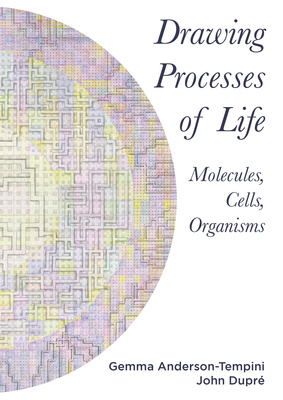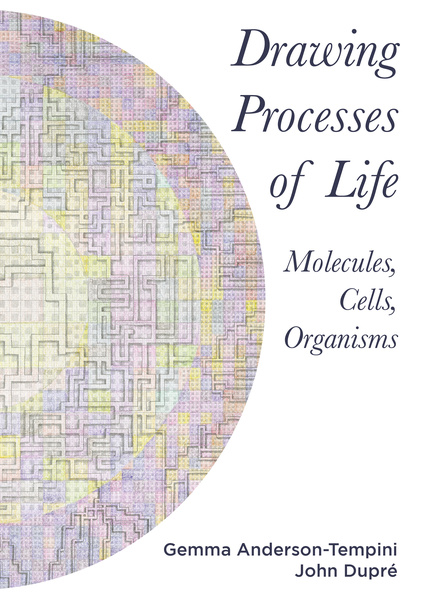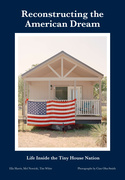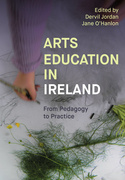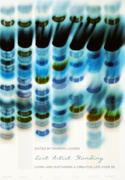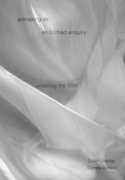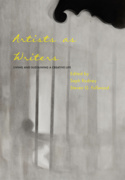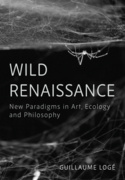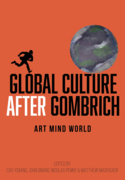Drawing Processes of Life (Book)
Molecules, Cells, Organisms
The edited collection Drawing Processes of Life is the product of artists, biologists and philosophers working together to formulate new ways of representing a new approach to life. It shows how better to represent biological process through drawing and to demonstrate the scientific value of drawing as a method. 78 b/w and 36 colour illustrations.
A PDF version of this book is available for free in Open Access. It has been made available under a Creative Commons Attribution 4.0 International Public License.
Edition
Drawing Processes of Life is the product of biologists, philosophers, and artists working together to formulate new ways of representing our new approach to life. It is a mutualistic symbiosis, where identities are transformed, information and nutritive substances shared, and where new organisms emerge.
Originating from an AHRC-funded interdisciplinary project, it derives from Gemma Andersons’ work on the methodological and epistemological value of drawing as a technique in biological research and from her collaborative work on visualising living – biological – processes through artistic processes. It also draws on John Dupré’s recent work on biology as process, and the need to develop representations of biological systems that more adequately capture their processual nature. Hence the book has intertwined aims: to show how better to represent biological process through drawing and to demonstrate the scientific value of drawing as a method.
The book presents this work and locates it in a broader historical and contemporary perspective on the relations between art and science. The project outcomes are interwoven with the work of leading scholars in the field. Many of these contributions also stress the problems presented by the processual nature of biological phenomena, a central focus of Anderson and Dupré’s own work.
Contributors include Chiara Ambrosio, Heather Barnett, Alessio Corti, Katharina Lee Chichester, Johannes Jaeger, Wahida Khandker, Jonathan Phillips, Berta Verd, James Wakefield and Janina Wellmann. Foreword from Scott F. Gilbert, and Afterword from Sarah Gilbert and Scott F. Gilbert.
The perspectives presented here constitute a powerfully integrated and vital set of themes of interest to artists, scientists, philosophers, students and post-doctoral researchers.
Gemma Anderson-Tempini is a Northern Irish artist who has developed a number of collaborative art/science/philosophyprojects including ‘Representing Biology as Process’ (2017-2021) at the University of Exeter, ‘Hidden Geometries’ with the Mathematics Department at Imperial College London; ‘Isomorphology’ and the ‘Cornwall Morphology and Drawing Centre’ at CAST with the Natural History Museum, London; and ‘Portraits: Patients and Psychiatrists’ (Wellcome Trust Arts Award 2009) with the Bethlem Royal Hospital. Her work has been exhibited at the Victoria and Albert Museum, the Freud Museum and the Wellcome Collection, London. Most recently, her work is part of the exhibition ‘The Botanical Revolution in Contemporary Art’ at the Kroller-Muller Museum, NL; ‘Critical Zones; Observatories for Earthly Politics’ at the Centre for Art and Media (ZKM), Karlsruhe, Germany and ‘The Botanical Mind: Art, Mysticism and the Cosmic Tree’ Exhibition at Camden Arts Centre, London.
John Dupré is Professor of Philosophy and Director of Egenis centre for the study of life sciences, University of Exeter, UK.
List of Figures
Acknowledgements
Foreword: Symbiotic Perspectives on the Processes of Biology and Art – Scott F. Gilbert
Introduction – John Dupré and Gemma Anderson-Tempini
1. Conrad H. Waddington and the Image of Process Biology – K. Lee Chichester
2. Drawing as a Pragmatist Visual Epistemology – Chiara Ambrosio
3. Drawing to Extend Waddington’s Epigenetic Landscape – Gemma Anderson-Tempini, Berta Verd and Johannes Jaeger
4. Drawing the Origami Embryo as a Stratified Space–Time Worm – Gemma Anderson-Tempini and Alessio Corti
5. Drawing the Dynamic Nature of Cell Division – Gemma Anderson-Tempini, James Wakefield and John Dupré
6. Drawing as Intuitive Mode for Representing Protein Dynamics – Gemma Anderson-Tempini, Jonathan ‘J. J.’ Phillips and John Dupré
7. Drawing Out the Superorganism: Artistic Intervention and the Amplification of Processes of Life – Heather Barnett
8. Mimicry, Adaptation, Expression – Wahida Khandker
9. Metamorphosis in Images: Insect Transformation from the End of the Seventeenth to the Beginning of the Nineteenth Century – Janina Wellmann
10. Flow, Attend, Flex: Introducing a Process-Oriented Approach to Live Cell Biological Research – James G. Wakefield
Process Epistemologies for the Careful Interplay of Art and Biology: An Afterword – Sarah R. Gilbert and Scott F. Gilbert
Notes on Contributors
Index

